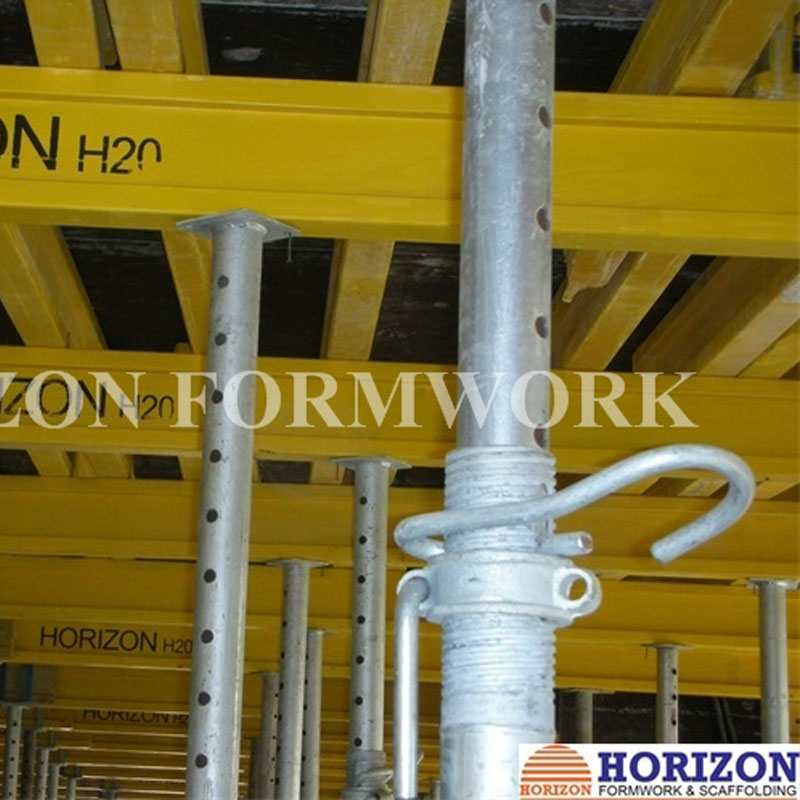Januari . 06, 2025 18:56 Back to list
Table Formwork
Post shore is a pivotal component in modern construction projects, serving as a temporary structural support system used primarily when the initial formwork of a structure has been removed. This system ensures the stability of the structure as it gains strength from the curing process. The use of post shores is particularly vital for concrete surfaces, providing essential support to prevent any potential structural failures.

In commercial, residential, and infrastructural construction, post shores are indispensable. They are expertly engineered to bear significant weight, reinforcing both floors and ceilings during the critical curing period. One of the most advantageous aspects of modern post shores is their adjustable nature, allowing them to cater to various heights and structural needs across diverse projects. Their versatility makes them suitable for use in high-rise buildings, bridges, and other large-scale construction ventures where loads are considerable.
An insightful case study showcases the essential role of post shores in the development of a multi-story office complex in a metropolitan area. During construction, contractors faced the challenge of working with unusually high ceilings, which required customized support solutions. Utilizing a combination of heavy-duty steel post shores, the project successfully maintained structural integrity across all floors. The ability to adjust the shores incrementally ensured precision in height and alignment, making them an irreplaceable part of the project’s framework strategy.

From an engineering perspective, selecting the right post shore involves a thorough understanding of load-bearing capacities and material properties. Typically, materials used for post shores include high-grade steel and aluminum, each offering unique benefits. Steel shores are known for their durability and ability to handle heavy loads, while aluminum offers a lighter, more mobile option without sacrificing strength. The choice between these materials often depends on specific project requirements, such as the need for mobility versus static strength.
post shore
Safety is paramount when using post shores. As structures they support are often heavily relied on in the initial phases of construction, thorough inspection and maintenance routines must be adhered to. Regular checks for wear and stress fractures in the material, as well as ensuring foundation stability, are essential practices to mitigate risks. Furthermore, proper training for construction workers on the installation and adjustment of post shores can greatly enhance site safety and efficiency.
The role of post shore systems extends beyond mere support. They are integral to maintaining construction timelines and budgets. By providing reliable interim support, these systems allow other aspects of construction to continue concurrently, reducing downtime and enhancing productivity. Contractors who strategically utilize post shores often report improved overall project efficiency and adherence to projected timelines.
As technology and materials advance, post shore systems continue to evolve. Innovations such as integrated load monitoring systems are now available, providing real-time data on weight distribution and stress points. These smart systems help engineers make informed decisions during construction, further enhancing the safety and reliability of post shore solutions.
In conclusion, post shores represent the convergence of engineering expertise and practical application, foundational to modern construction projects. Their ability to provide adjustable, reliable support makes them invaluable to ensuring the safety and success of structures during their most vulnerable phases of development. For contractors and engineers seeking to optimize their construction processes, investing in state-of-the-art post shore systems is not just wise but essential for upholding the standards of structural integrity and safety in the industry.
-
Formwork Spring Clamp Factories: Quality & Bulk Supply
NewsAug.21,2025
-
Premium Ringlock Scaffolding | China Manufacturer & Supplier
NewsAug.19,2025
-
Efficient Table Formwork for Fast Slab Construction & Reusability
NewsAug.18,2025
-
Timber Beam H20 Formwork & Shuttering - Durable & Reliable
NewsAug.17,2025
-
Timber Beam H20: Premium Formwork & Shuttering Solutions
NewsAug.16,2025
-
Premium H20 Timber Beam for Formwork & Slab Shuttering
NewsAug.15,2025